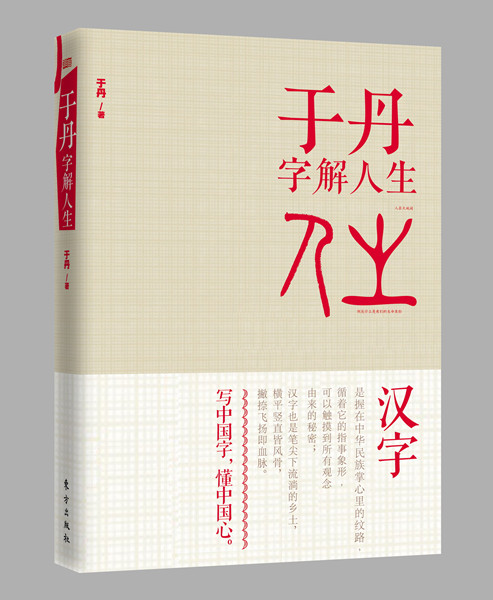Using Chinese characters to promote culture through imagery
Updated: 2015-11-18 08:01
By Yang Yang(China Daily)
|
||||||||
 |
|
Yu's new book Yu Dan Interprets Life Using Chinese Characters. [Photo provided to China Daily] |
Hanzi (Chinese characters) are not difficult to understand and learn if studied from the aesthetic perspective of pictographs and as a carrier of Chinese culture, says Yu Dan, a spokeswoman for traditional Chinese culture and professor at Beijing Normal University.
Earlier this year, she published Yu Dan Zijie Rensheng (Yu Dan Interprets Life Using Chinese Characters).
"Hanzi is a good medium for us to tell Chinese stories," she says.
In the book, Yu combines the evolution of hanzi with that of Chinese society to interpret the meaning of hanzi and the cultural connotations.
At the end of October, Yu hosted a cultural event at the headquarters of the United Nations Educational, Scientific and Cultural Organization in Paris, which focused on how to use hanzi, especially through design, to explore their external and internal beauty.
The activity was co-hosted by the Beijing Institute of Culture Innovation and Communication and Dongdao Creative Branding Group.
At the event, ambassadors and senior officials from UNESCO, Greece and other countries played a game to piece two components together to form a Chinese character, with every character having the heart component.
"This year, we focused on the hanzi component xin (heart)," says Yu, 50.
Xin covers many thoughts including mercy (cibei) and will (yizhi). They come from the heart because the characters in these words have heart as the base, she says.
"It might be difficult to talk about Taoism and Confucianism, but if you analyze a Chinese character, you will find it's like a picture, a pattern, referring to a certain thought in Taoism and Confucianism," she says.

 Panda cub Bei Bei to make public debut on Jan 16
Panda cub Bei Bei to make public debut on Jan 16
 Landmarks of Paris reopen for tourists after terrorist attacks
Landmarks of Paris reopen for tourists after terrorist attacks
 French warplanes strike Islamic State Syria bastion
French warplanes strike Islamic State Syria bastion
 High-tech fair gears up in Shenzhen
High-tech fair gears up in Shenzhen
 Biggest wild Chinese sturgeon seeks treatment in Beijing
Biggest wild Chinese sturgeon seeks treatment in Beijing
 Tranquility in the ‘Water Forest’
Tranquility in the ‘Water Forest’
 Xi, Putin meet at G20 summit, renewing pledges on cooperation
Xi, Putin meet at G20 summit, renewing pledges on cooperation
 Skimming the surface
Skimming the surface
Most Viewed
Editor's Picks

|

|

|

|

|

|
Today's Top News
Chinese president arrives in Turkey for G20 summit
Islamic State claims responsibility for Paris attacks
Obama, Netanyahu at White House seek to mend US-Israel ties
China, not Canada, is top US trade partner
Tu first Chinese to win Nobel Prize in Medicine
Huntsman says Sino-US relationship needs common goals
Xi pledges $2 billion to help developing countries
Young people from US look forward to Xi's state visit: Survey
US Weekly

|

|







